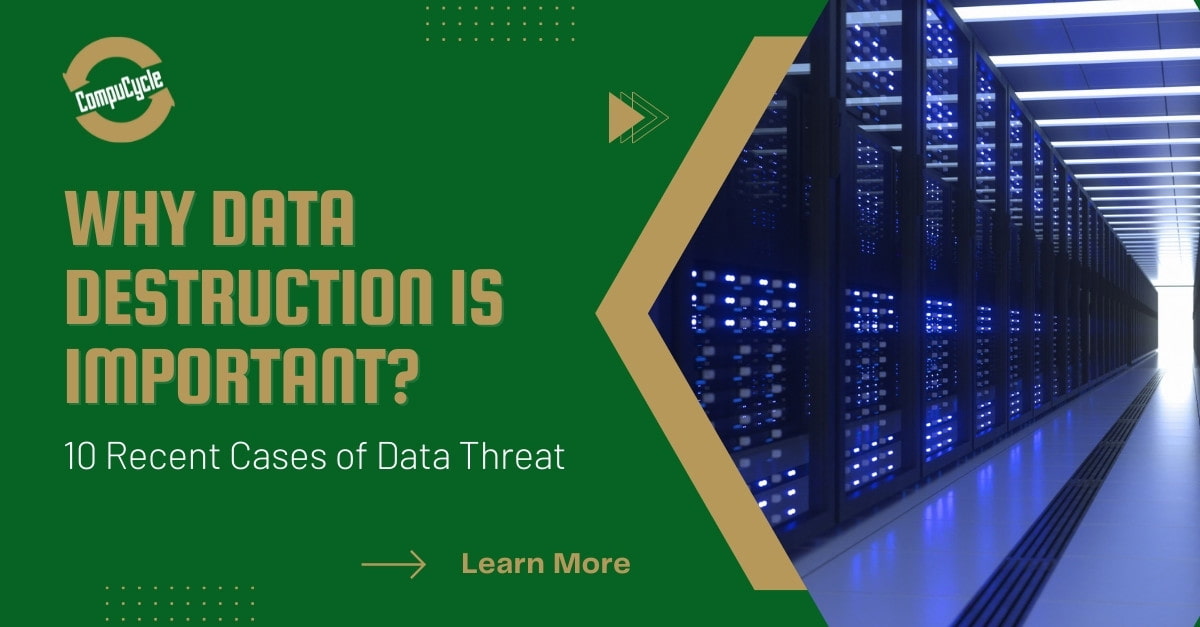The Importance of Effective Data Destruction Practices in Shielding Sensitive Information and Ensuring Computer Security
In a period where data violations are significantly common, the relevance of reliable data devastation practices can not be overemphasized. Carrying out durable data devastation methods not just mitigates these threats but additionally aligns with legal conformity needs, guaranteeing that organizations support their online reputation and foster customer count on.
Understanding Data Devastation
Understanding data damage is critical in today's electronic landscape, where sensitive info can quickly be jeopardized. Effective information devastation includes not merely guaranteeing however removing files that information is irretrievable via comprehensive methods. This process is necessary for organizations that take care of personal client details, copyright, or interior papers, as any type of breach can lead to severe financial and reputational effects.
Information devastation encompasses various strategies, consisting of shredding physical media, degaussing magnetic storage devices, and employing software-based solutions that overwrite data numerous times. Each approach serves a certain objective and needs to line up with the level of sensitivity of the details being dealt with. As an example, physical devastation is usually liked for hard disk drives consisting of extremely confidential information, while software approaches may be sufficient for less sensitive details.
Furthermore, sticking to market standards and laws, such as the General Information Protection Law (GDPR) or the Health Insurance Mobility and Accountability Act (HIPAA), is essential for conformity and to alleviate legal dangers. Organizations needs to develop a robust data damage plan, train workers on finest methods, and frequently investigate their procedures to make sure that all delicate details is gotten rid of securely and successfully.
Threats of Inadequate Practices
Inadequate data damage techniques reveal organizations to substantial dangers that can have far-ranging consequences. When sensitive details is not properly gotten rid of, it continues to be at risk to unauthorized access, which can cause data breaches and identity burglary. Such incidents not just compromise the safety and security of individuals yet also tarnish the company's reputation, resulting in a loss of customer trust and potential financial consequences.
Furthermore, regulative compliance is increasingly stringent in several industries. Failing to stick to data devastation guidelines can lead to large fines and lawful activities against organizations. These fines can stress funds and draw away interest from core organization operations.
Furthermore, the misuse of recurring data can cause intellectual residential property theft or business espionage, endangering competitive benefits (data destruction). The impact of poor data destruction expands past instant economic losses; it can likewise result in lasting damage to brand name stability and market placement

Organizations need to recognize that information safety is not entirely concerning stopping violations; it likewise encompasses the responsible administration of information throughout its lifecycle. Neglecting efficient information devastation procedures can have tragic ramifications, underscoring the requirement for durable measures to reduce these threats.
Ideal Practices for Information Destruction
Carrying out reliable data destruction techniques is important for securing sensitive info and maintaining compliance with regulative requirements. Organizations ought to take on a multi-faceted technique to ensure that data is irretrievable, thus protecting against unapproved accessibility and possible breaches.
First, data should be categorized based on sensitivity, allowing organizations to apply proper devastation approaches customized to the degree of danger. For electronic data, utilizing software-based data-wiping devices that conform with market requirements can successfully overwrite existing information. Physical damage techniques, such as shredding or degaussing, are vital for gadgets that keep delicate details, ensuring full obliteration.
Developing a clear information check my reference retention plan is essential, describing for how long different sorts of details need to be preserved prior to destruction. Normal audits of information storage systems are also essential to determine outdated or unnecessary information requiring removal.
In addition, training staff members on the value of information devastation and the particular protocols to adhere to fosters a culture of security within the company. Lastly, preserving documents of data destruction processes provides liability and supports conformity with internal policies and external regulations. By sticking to these ideal practices, companies can significantly minimize the risks connected with information exposure.
Legal and Compliance Considerations

Failure to abide with these laws can lead to serious penalties, consisting of considerable fines and reputational damages. Organizations needs to implement a robust information damage policy that lines up with these lawful frameworks and offers clear standards on the proper techniques of data disposal, whether physical shredding or electronic wiping.
Moreover, maintaining documents of information devastation activities is vital for demonstrating compliance during audits or assessments. By focusing on lawful and compliance considerations, organizations can enhance their data safety and security pose and foster trust fund with customers and stakeholders, eventually contributing to a much more secure information monitoring atmosphere.
Benefits of Effective Data Damage
Reliable data damage methods extend beyond mere conformity; they offer significant benefits to companies that prioritize them. By guaranteeing that delicate details is irretrievably damaged, organizations reduce the threat of data breaches and the prospective economic repercussions related to them. This positive method not just safeguards against unapproved accessibility however additionally enhances the general dependability of the organization in the eyes of stakeholders and customers.
Implementing durable data damage methods, such as physical damage of storage tools or innovative data wiping methods, contributes to the conditioning of a company's cybersecurity posture. data destruction. It reduces the chance of intellectual home theft and protects proprietary details, thus keeping an affordable side on the market

Final Thought
To conclude, efficient information devastation practices additional resources are necessary for protecting delicate details and enhancing total computer security. By implementing detailed methods such as software, shredding, and degaussing overwriting, organizations can alleviate the dangers related to unauthorized access and information breaches. Adherence to governing standards, including GDPR and HIPAA, further reinforces conformity and safeguards against legal effects. Eventually, a commitment to robust data destruction methods promotes a society of duty, thus enhancing an organization's cybersecurity posture and maintaining customer trust.
